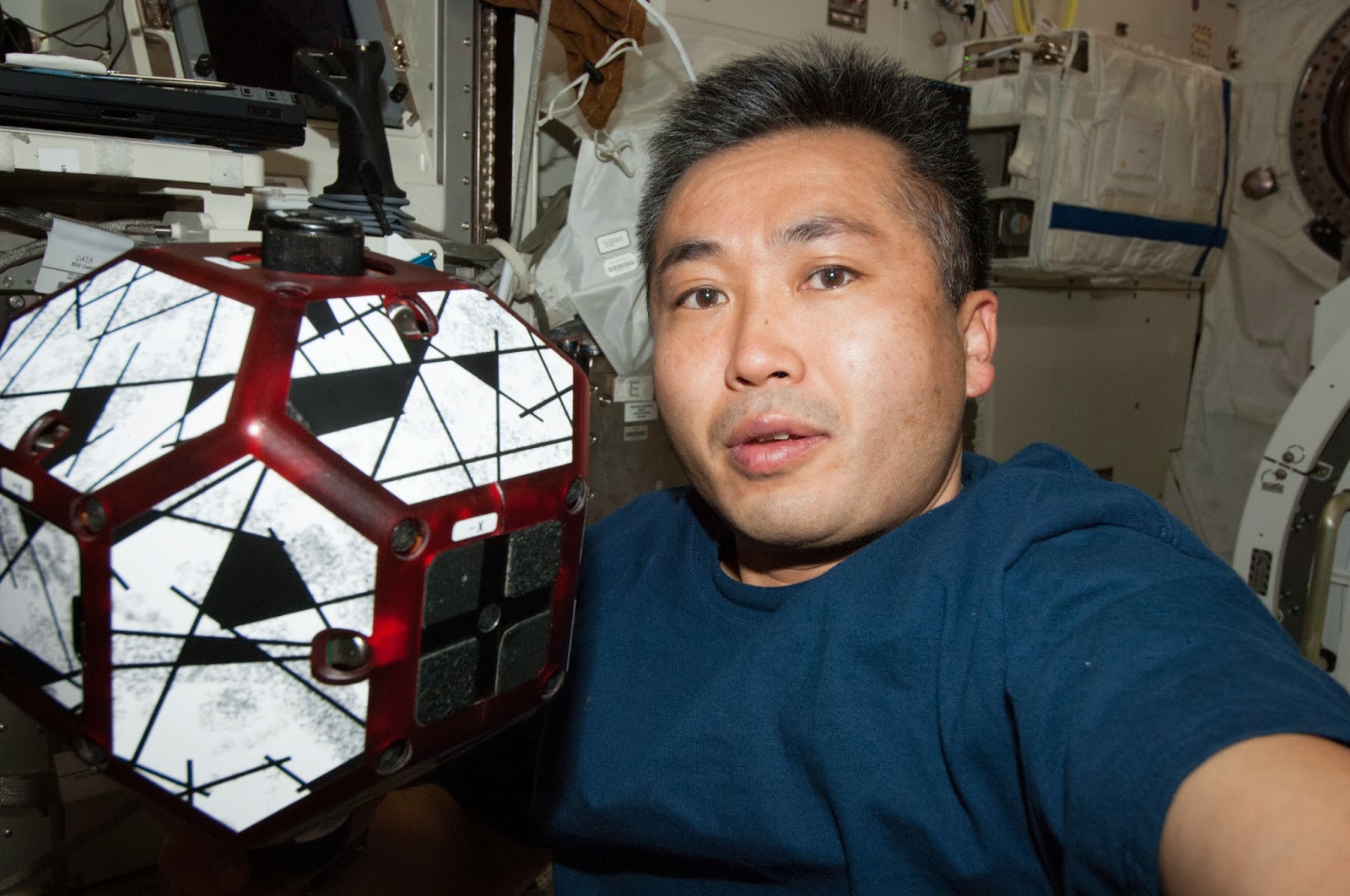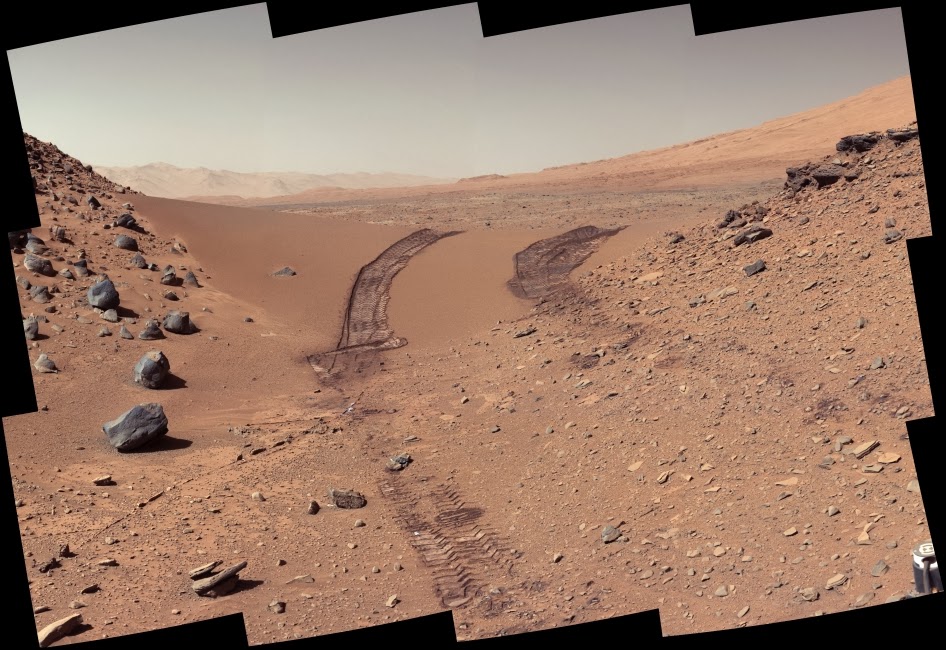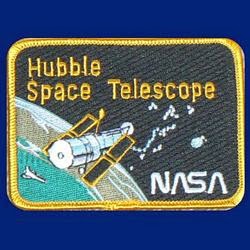NASA - Fermi Gamma-ray Space Telescope logo.
February 20, 2014
Black widow spiders and their Australian cousins, known as redbacks, are notorious for their tainted love, expressed as an unsettling tendency to kill and devour their male partners. Astronomers have noted similar behavior among two rare breeds of binary system that contain rapidly spinning neutron stars, also known as pulsars.
"The essential features of black widow and redback binaries are that they place a normal but very low-mass star in close proximity to a millisecond pulsar, which has disastrous consequences for the star," said Roger Romani, a member of the Kavli Institute for Particle Astrophysics and Cosmology, an institute run jointly by Stanford and SLAC National Accelerator Laboratory in Menlo Park, Calif. Black widow systems contain stars that are both physically smaller and of much lower mass than those found in redbacks.
So far, astronomers have found at least 18 black widows and nine redbacks within the Milky Way, and additional members of each class have been discovered within the dense globular star clusters that orbit our galaxy.
A Black Widow Pulsar Consumes its Mate
Video above: Learn how astronomers discovered PSR J1311-3430, a record-breaking black widow binary and the first of its kind discovered solely through gamma-ray observations. Image Credit: NASA's Goddard Space Flight Center.
One black widow system, named PSR J1311-3430 and discovered in 2012, sets the record for the tightest orbit of its class and contains one of the heaviest neutron stars known. The pulsar's featherweight companion, which is only a dozen or so times the mass of Jupiter and just 60 percent of its size, completes an orbit every 93 minutes – less time than it takes to watch most movies. Initial estimates put the neutron star at about 2.7 solar masses, but more recent studies allow a range of values extending down to 2 solar masses, still among the highest-known for neutron stars. (Watch the video above to learn more about this system and its discovery from some of the scientists involved.)
When a massive star explodes as a supernova, the crushed core it leaves behind – a neutron star -- squeezes more mass than the sun into a ball no larger than Washington, D.C. When young, an isolated neutron star rotates tens of times each second -- or a few thousand revolutions per minute -- and generates beams of radio, visible light, X-rays and gamma rays that astronomers observe as pulsed emission whenever the beams sweep past Earth. They also generate powerful outflows, or "winds," of high-energy particles. The power for all this derives from the neutron star's rapidly spinning magnetic field, and over time, as solitary pulsars wind down, their emissions fade.
Thirty-two years ago, astronomers discovered a new, much faster class of pulsars. With rotation periods of 10 milliseconds or less, these neutron stars spin at astonishing speeds, up to 43,000 rpm. Today, more than 300 of these so-called millisecond pulsars have been cataloged. While young pulsars usually appear in isolation, more than half of millisecond pulsars have a stellar partner, suggesting that interactions with a normal star can rejuvenate an older, slower neutron star. But how did isolated millisecond pulsars get their groove back?
Enter black widows and their kin.
"The high-energy emission and wind from the pulsar basically heats and blows off the normal star's material and, over millions to billions of years, can eat away the entire star," said Alice Harding, an astrophysicist at NASA's Goddard Space Flight Center in Greenbelt, Md. "These systems can completely consume their companion stars, and that's how we think solitary millisecond pulsars form."
NASA's Fermi Gamma-ray Space Telescope excels at locating millisecond pulsars, with more than four dozen found to date. Pulsars stand out as prominent gamma-ray sources to Fermi's Large Area Telescope (LAT), but searching for their pulsations in Fermi data is extraordinarily difficult without knowing more about the system. Follow-up surveys with radio telescopes are usually the first to pick up pulses, providing confirmation that the object is indeed a pulsar. By narrowing down the timing and other parameters, radio studies also enable Fermi scientists to tease out the gamma-ray pulses from LAT data.
"Almost all of the black widows and redbacks known in our galaxy have been detected by Fermi, and more than half were actually discovered by targeting Fermi sources with various radio telescopes," said Mallory Roberts, a researcher for Eureka Scientific, Inc. who is currently a visiting professor at New York University in Abu Dhabi, United Arab Emirates. He has participated in several radio surveys of Fermi sources and led one with the Robert C. Byrd Green Bank Telescope in West Virginia that uncovered five of these systems.
Pulsars emit intense radiation because their rapid rotation and strong magnetic fields accelerate particles to tremendous energies. For astronomers, an exciting aspect of the black widow and redback systems is the opportunity to observe how the stellar companion intercepts energy from the pulsar. In effect, the star serves as a vanity mirror, showing the pulsar's emissions in tremendous detail.
When Romani began investigating the Fermi source now known as PSR J1311-3430 (J1311, for short), he imaged the system in visible light. This revealed a faint star that changed color from an intense blue to a dull red – hot and cold, for stars -- every hour and a half. Romani conjectured that the star was orbiting and being dramatically heated by a compact object, most likely a pulsar, and suggested that the system was a new black widow.
Image above: Spinning 390 times a second, PSR J1311-3430 periodically swings its radio (green) and gamma-ray (magenta) beams past Earth in this artist's concept. The pulsar heats the facing side of its stellar partner to temperatures twice as hot as the sun's surface and slowly evaporates it. Image Credit: NASA's Goddard Space Flight Center.
His measurements indicate that the side of the star facing the pulsar is heated to more than 21,000 degrees Fahrenheit (nearly 12,000 C), or more than twice as hot as the sun's surface. The cool red side reveals the true color of the pipsqueak star, glowing at a temperature of 5,000 F (2,700 C) -- half the sun's surface temperature – or lower.
Simple models used for other black widows assume that the pulsar blowtorch heats its partner uniformly; when applied to J1311, they indicate a very large mass for the neutron star. However, additional observations made in 2013 with the Gemini Telescope in Chile and the Keck Telescope in Hawaii show spectacular flares on the companion, indicating variable heating. This allows somewhat lower pulsar masses down to twice the mass of the sun. Reflecting this adjustment, the companion scales up to between 12 to 17 times the mass of Jupiter.
A search of archival observations with the Green Bank Telescope failed to turn up any radio pulsations, but Holger Pletsch at the Albert Einstein Institute in Hannover, Germany, led an international team on an effort to comb through four years of Fermi LAT data in a search for gamma-ray pulses. The orbital information established by Romani's work significantly narrowed the search, but the unknown pulsar parameters still left 100 million billion combinations to explore. Nevertheless, armed with a new, more efficient method, they detected a clear signal soon after the analysis began.
"This was the first time a millisecond pulsar has ever been detected solely by pulsed gamma rays," Pletsch said. "Seeing this signal was extremely exciting and satisfying for our team, and it's another triumph for Fermi." Spinning at 390 times a second – more than 23,000 rpm -- J1311 rotates on average about a million times between every gamma ray detected by the LAT.
After this discovery, a team led by Paul Ray at the Naval Research Laboratory in Washington took a long look at the system with the Green Bank Telescope and other radio observatories. They found that the system does indeed emit radio pulses, but only during brief, irregular intervals. "The pulsar heating is ablating its companion, literally blowing it away, so ionized gas fills the system, and this scatters or absorbs the radio emission most of the time," Ray said. Higher-energy gamma rays easily punch through the veil.
Black widow and redback binaries offer unique natural laboratories for studying pulsars up close through the disastrous effects on their partners, which are distorted by the neutron star's tidal pull, inflamed by its gamma rays, pummeled with particles accelerated to near the speed of light, and ultimately evaporated in a breakup of cosmic proportions.
Related Links:Download additional images and HD animation sequences from NASA Goddard's Scientific Visualization Studio:
http://svs.gsfc.nasa.gov/goto?11215Interactive: Fermi Pulsar Explorer:
http://www.nasa.gov/externalflash/fermipulsar/Paper: Radio Detection of the Fermi LAT Blind Search Millisecond Pulsar J1311-3430:
http://arxiv.org/abs/1210.6676Paper: PSR J1311-3430: A Heavyweight Neutron Star with a Flyweight Helium Companion:
http://pubman.mpdl.mpg.de/pubman/item/escidoc:1563464:2/component/escidoc:1563463/science.1229054.full.pdfPaper: Binary Millisecond Pulsar Discovery via Gamma-Ray Pulsations:
http://pubman.mpdl.mpg.de/pubman/item/escidoc:1563464:2/component/escidoc:1563463/science.1229054.full.pdfPaper: 2FGL J1311.7-3429 Joins the Black Widow Club:
http://iopscience.iop.org/2041-8205/754/2/L25/pdf/2041-8205_754_2_L25.pdfList of rotation- and accretion-powered millisecond pulsars:
http://apatruno.wordpress.com/about/millisecond-pulsar-catalogue/"NASA's Fermi Finds Youngest Millisecond Pulsar, 100 Pulsars To-Date" (11.03.11):
http://orbiterchspacenews.blogspot.ch/2011/11/nasas-fermi-finds-youngest-millisecond.htmlImages (mentioned), Video (mentioned), Text, Credits: NASA's Goddard Space Flight Center / Francis Reddy.
Best regards, Orbiter.ch















































